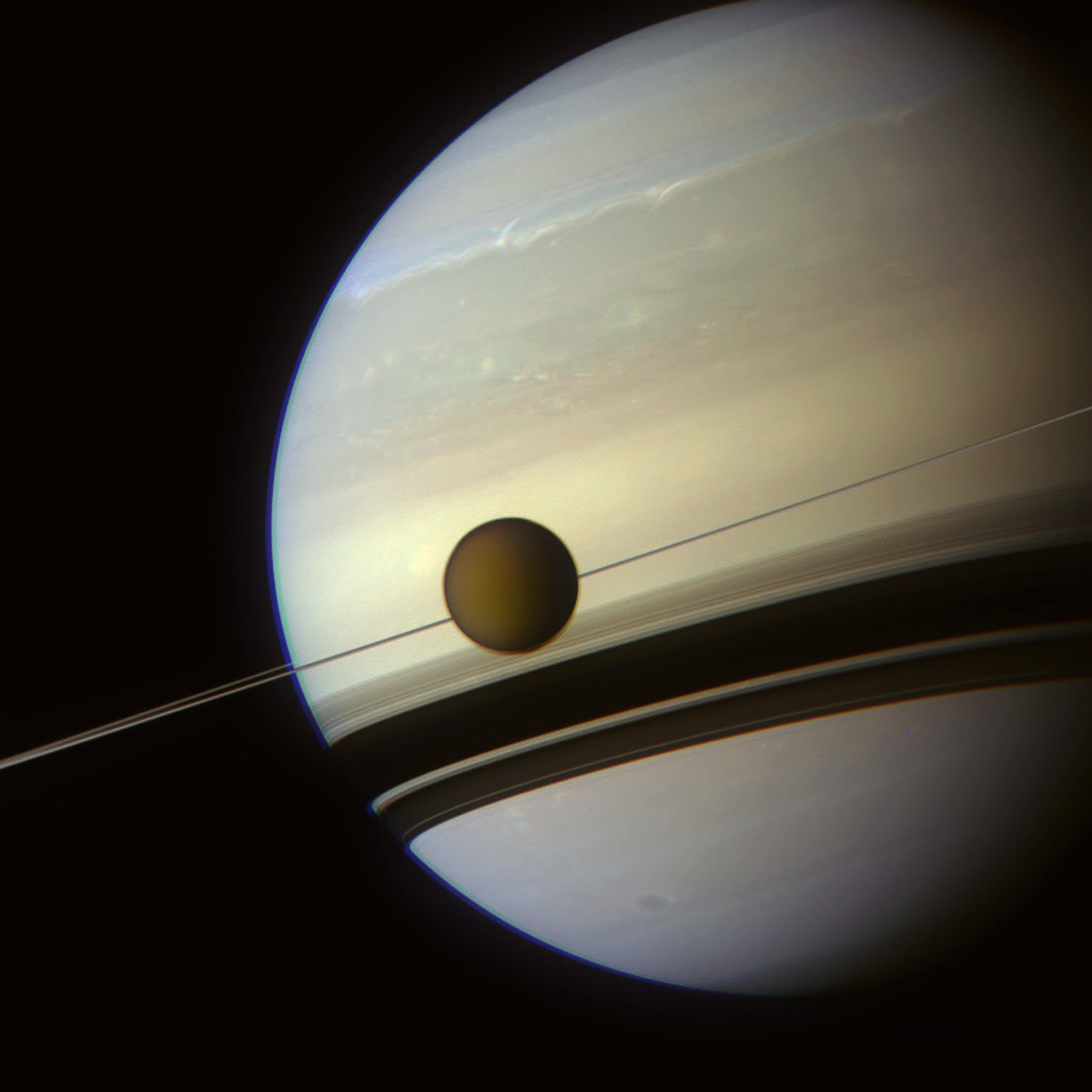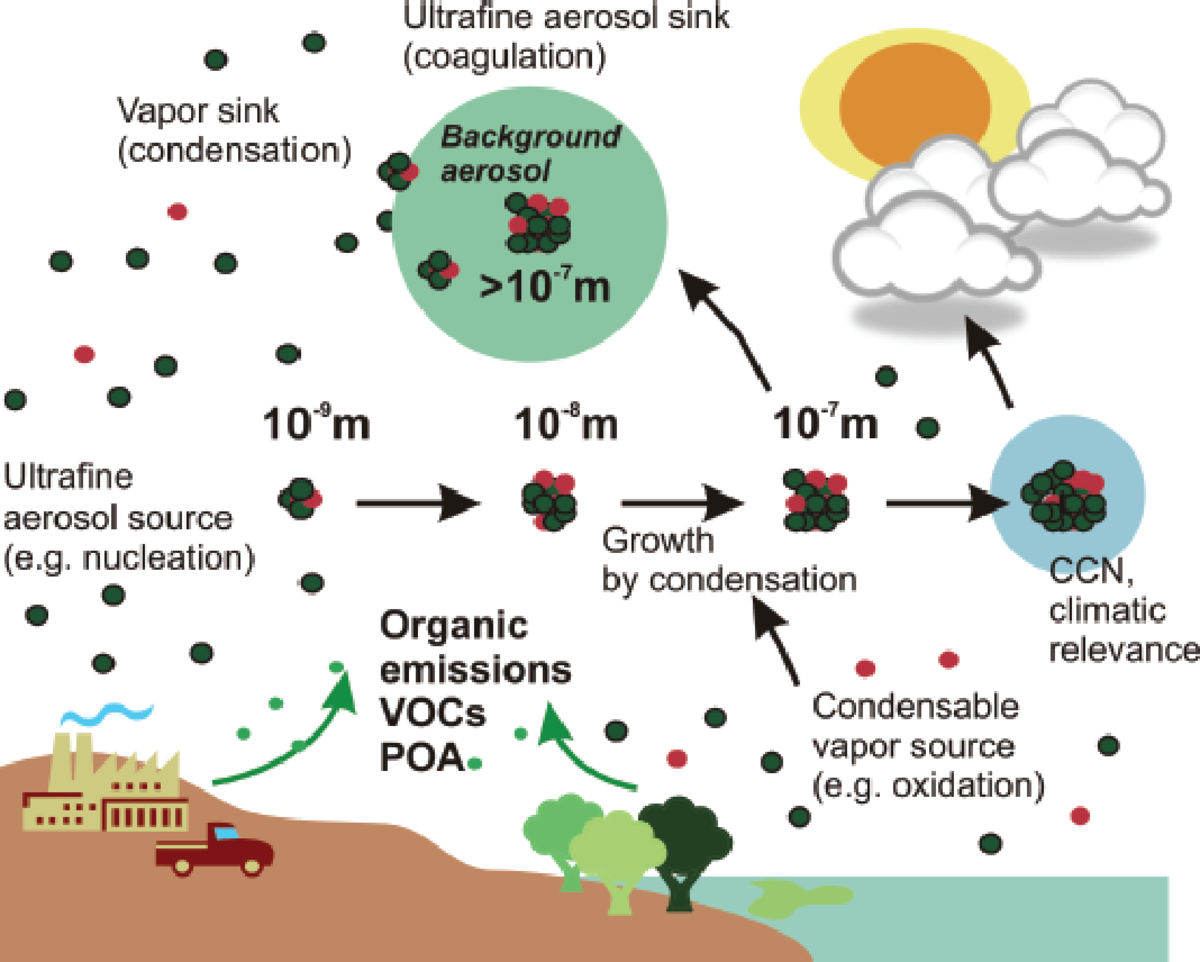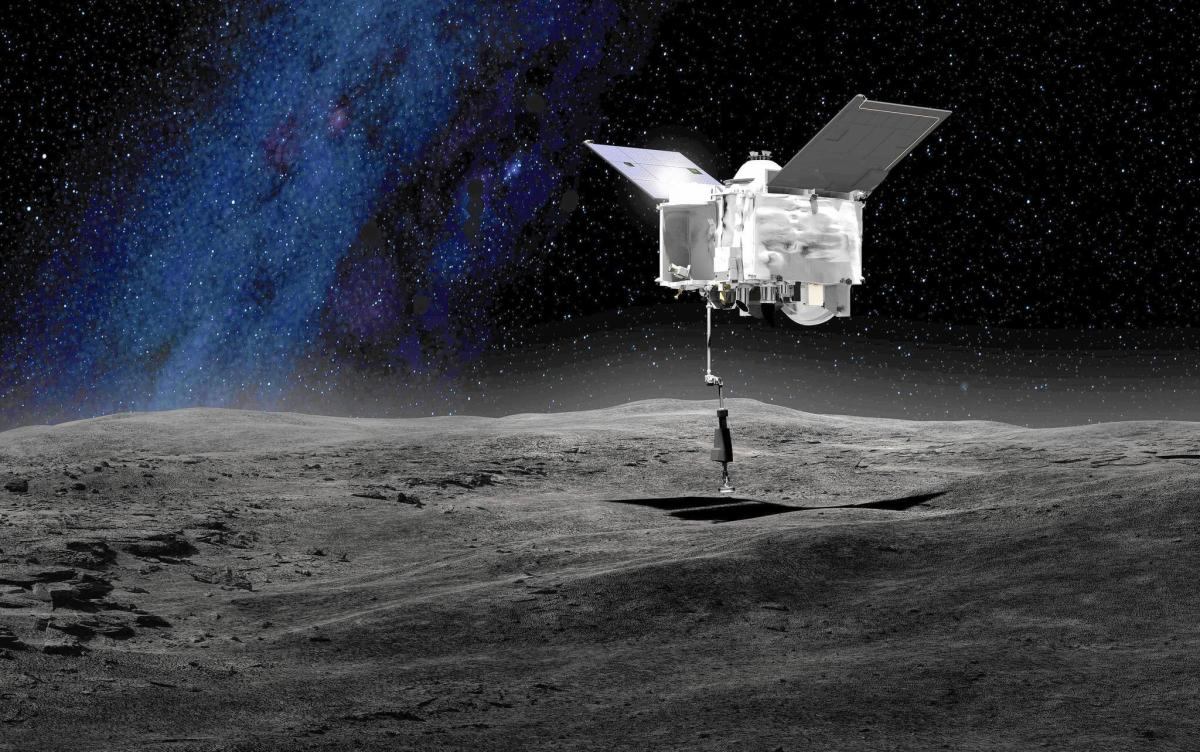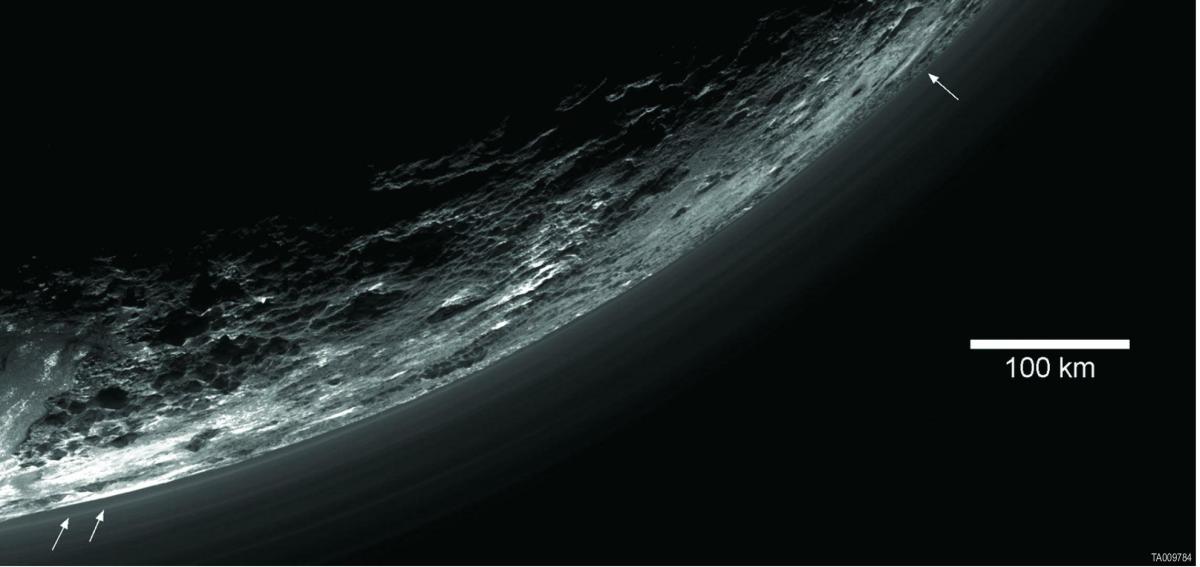Asteroids and their impact on Earth
Large asteroid impact on earth
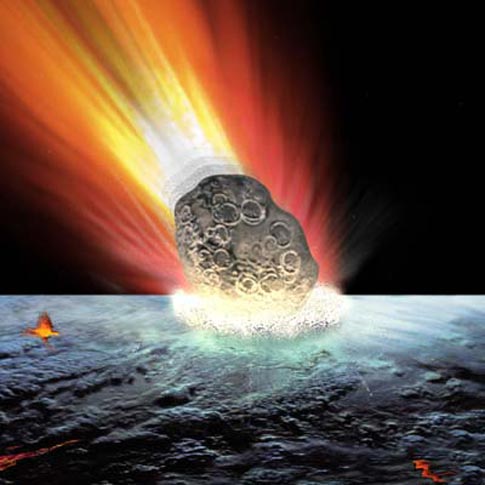
Comets, Asteroids and Earth: Are they a Threat?
The nature of solar system evolution has left a lot of bits left over. By and large, these have been sorted into “safe zones” by the planets. Sometimes the same planets an redirect them into more dangerous orbits. Thus, safety is not universal and there are tens, perhaps hundreds of thousands in the vicinity of Earth's orbit. Among these are the Atens, Apollos and Amors. These are just the asteroids. Many comet's orbits and their bits also cross the Earth's orbit, sometimes with catastrophic circumstances. We know of 16 primary events where meteor showers occur each year and at least one of them produced a significant blow in historical memory.
We live in a constantly changing world wide dynamic climate. Sometimes we hear of huge hurricanes and F-5 super tornadoes in various parts of the world, like Typhoon Tip in 1979 and Hurricane Gustav in 2008. But these pale in comparison to the icy grip of a 100,000 year long ice age or wind speeds that are clocked on worlds like Jupiter and Neptune. So what prevents such winds from occurring on Earth? It is the uneven surface primarily due to continents and mountains between oceans. One section of the Earth does have continuous winds, which is located south of the 40th parallel where little land exists. But this lack of high winds is not always the case. Shock waves generated from atomic explosions or impacts can move much faster than the wind of record hurricanes like the category 5 and 6. In addition, these winds can shred anything in their path. Legend tells of winds that can move what we would consider unmovable by wind alone. That legend has now been born out in fact. All it takes to launch a person into the air is a constant wind speed of about 135 mph, the so-called terminal velocity of a free fall from an air-plane. The resistance of the atmosphere called drag is the operative factor in this scenario. A wind with sustained speed of 135 mph or more can loft cars, boats, trucks, animals and people into the air. We have seen the destruction that comes from tornadoes and hurricanes repeatedly. With strong enough sustained winds, people can literally be blown away.
Sudden
shock generated by anything like hurricanes, F-5 tornadoes, atomic
bombs or bunker busters and bolide impacts operate by generating an
overpressure on one side of any freestanding structure. Shock-waves
of overpressure from atomic testing have been measured from 3 to 85
PSI over and above standard atmospheric pressure in American atomic
testing. It is the sudden introduction of overpressure that can
obliterate concrete and bend solid steel I-beams. So we have some
kind of insight as to what even a small bolide reaching the Earth's
surface or detonating above it can do. One such event in living
memory is the Tungeska event on the local morning of June 30th,
1908. The Tungeska event flattened a thousand square kilometres of
Siberian forest.
Under the right circumstances, like an air
bust nuclear detonation or an exploding bolide, anything can be
lifted off the ground and carried a considerable distance. Explosions
located at the right distance from the Earth's surface, create a
pressure wedge that moves at supersonic speed along the ground,
sheering and lifting everything in its path. Filmed evidence of such
phenomenon exists in "Trinity and Beyond" and declassified
US atomic bomb test films. Even a small bolide can have the same
effects of an atomic detonation. In fact, atomic explosions have
become a benchmark for classifying the intensity of any explosion,
whether volcanic or from impact. These are usually described in
numbers of Hiroshima bombs.
A major impact need not detonate
above the ground to generate a killing wind. The mere entry into the
atmosphere at 12 to 72 km/sec. will do, as will the subsequent impact
into the earth itself. The superheated explosion will generate a
globe circling shock wave that has far reaching effects. The shock
wave can circle the earth many times if a large impactor is involved.
On June 30th, 1908, the relatively small impact at Tunguska disturbed
barometers in Great Britain shortly after, with a transient
atmospheric over pressure spike. The Tungeska explosion flattened
forest, somewhat like the Mount St. Helens explosion did in
Washington State in 1980. An enormous shock derived wind born out a
Chicxulub like event would disintegrate the barometer and almost
everything else. As the impactor hit the ocean, tsunamis measured in
kilometres in height raced out to flood regions around the world. In
addition, this wind would circle the globe many times before
dissipating. But the great wind of such an event is just one of the
woes of such a disaster. There is also fire on an unimaginable scale,
which would only be doused by the tsunami.
The US and USSR
conducted several hundred atmospheric and space detonated
thermonuclear tests of A-bombs and H-bombs and they all demonstrate
the far-reaching effects of radiated heat and blast. This is
certainly one effect generated as a meteor enters the atmosphere.
Scaled up, the really large fireballs can incinerate a hemisphere
without even striking the ground. The high speed of the atmospheric
grazing bolide induces friction that can generate temperature hotter
than the surface of the sun. It merely has to graze the upper
atmosphere much like an event that occurred over the Grand Tetons in
Wyoming in the 1970s. A moderate sized iron asteroid grazing the
upper atmosphere at high speed would generate enough radiated heat to
flash ignites everything in the direct line of sight a few dozen
miles below. Even intervening clouds would not stop the radiated heat
as they would simply vaporize in the heat. Everything would burn from
horizon to horizon on both sides of its path as the object made its
passage by the Earth. But what if the Earth and the asteroid
collided?
The effects described above would be compounded as
the object vaporized many cubic miles of the Earths crust. An
earthquake would be triggered by the impact, followed by numerous
aftershocks. An ocean impact would create the instant boiling off of
a few hundred cubic miles of water, which would rush out from the
explosion in all directions at supersonic speed in a superheated
blast of steam. Some of the water would be heated to the point where
the hydrogen and oxygen atoms would be disassociated from each other,
only to bond together again as fuel for a super fire at a
considerable distance from the impact site. At the impact site,
surrounding ocean would soon rush into the newly formed crater and
initiate a mega-tsunami. An explosion the size of Chicxulub would
heat the whole atmosphere to the temperature of a broiling oven in
short order, well above the flash point of many combustible
materials. Impact debris created by the main strike would then create
secondary impacts around the world. For a short spell, the Earth
would be more like Venus in surface temperature. And this is just the
effect on the atmosphere. An ocean impact would raise a tsunami that
would dwarf Mount Everest in the case of a Chicxulub sized event.
It is thought that most of the five great extinction events occurred as a result of a major impact. If the impact itself did not kill, then the radically altered climate did. We are almost completely certain that the dinosaurs met their demise due to a major impact event and subsequent collapse of their climate. This opened the way for the evolution of mammals, which were small in the age of the dinosaurs. With the dinosaurs gone, the mammals filled the vacant ecological niches on Earth. We also have evidence for an event just 12,600 years ago in the then existing Laurentide ice sheet. At that time, many species went extinct in North America as well as the first Clovis people. This event ended the last ice age and raised sea level by 200 feet in less than a decade.
We now have another benchmark of what an impact can do. During July of 1994, 22 pieces of comet Shoemaker Levy impacted into Jupiter with astonishing results. Some of the fireballs that resulted were the size of the Earth and the temperatures were comparable to the sun’s surface. We now have an observed record of what a comet or an asteroid impact can do. The rest is just doing the math.
Today, we have the means to deal with it and the Russians are the first to launch a serious program to deal with the threat. Suggestions range from impacting these threatening objects to a course away from earth to nuclear detonation. Impacts, like on a recent comet flyby, would generate a jet that if properly done, would act as a rocket to nudge the main object into a new orbit. A nuclear detonation, if great enough and done below the surface, could pulverize the object into dust. Yet another suggestion is to instal a mass driver on the surface that would gather material from the objects surface and then propel it away at high speed as a form of rocket propulsion to change the orbit of a potential impactor. Some asteroids, like Geographis, are flying rubble piles and would be especially tricky to handle. These would have to be netted and then dragged out of threatening orbit. Objects on the order of 100 meters might well be dealt with from Earth by a high powered laser cannon, such as the type that has recently been successfully tested against rockets in flight.
Since the Jupiter event, a hunt has begun for threatening near Earth objects. So far we have found over a thousand objects bigger than a kilometre. There are ten time more of just 100 meters, which we have a much harder time finding. It is now considered that one of these is enough to collapse civilization and plunge humanity into an instant stone age during an impact winter. It would be a species threatening event. Thus, it is incumbent to take proactive action while we can.
References
http://en.wikipedia.org/wiki/List_of_Earth-crossing_minor_planets
http://en.wikipedia.org/wiki/Aten_asteroid
http://en.wikipedia.org/wiki/Apollo_asteroid
http://en.wikipedia.org/wiki/Amor_asteroid
http://en.wikipedia.org/wiki/Comet
Fresh out of Russia, a clear and present warning
Earth's new found Trojan asteroid as per prediction
A Brief History of Near Misses and a Current Event
- The Mammoth's Lament
Almost 13,000 years ago, something devastating changed the climate of the earth and caused mass extinctions. Evidence coming in now suggests a major impact at the time. - A History of Asteroid Collision Near Misses
If an asteroid hits earth it could very well be the end of days. We will not have Bruce Willis ready to give his life to save humanity and the huma - Huge asteroid will 'barely miss' Earth
A huge asteroid will make a 'cosmic brush' on Earth, closing in on our planet at a distance of only a few million kilometers. The massive asteroid, name

